I find the experience of taking a panoramic photo really satisfying; they are just so immersive. Until recently, this has mostly been accomplished with a digital camera. The only analog panorama photos I had experienced were those from point and shoot cameras that came equipped with a panoramic mode, in which a mask can be applied to the viewfinder and film plane that would crop a panoramic image into a standard 35mm negative frame. Of course the problem with panoramic point and shoot cameras is that the image quality from such a small negative is often pretty terrible.
This all changed when I came into possession of a vintage Soviet swing lens camera: the FT-2. The FT-2 was produced by KMZ from 1958-65 and it has a fascinating origin story. It was designed by Fedor Vasilievich Tokarev, a high-ranking Soviet weapons designer. Tokarev is probably best known for his semi-automatic weapon designs. One of these was the TT-33, a semi-automatic pistol which was used extensively by the Soviet military during World War II. According to some sources, the FT-2 was originally intended to be used to verify the accuracy of artillery, so it truly is a spy camera.
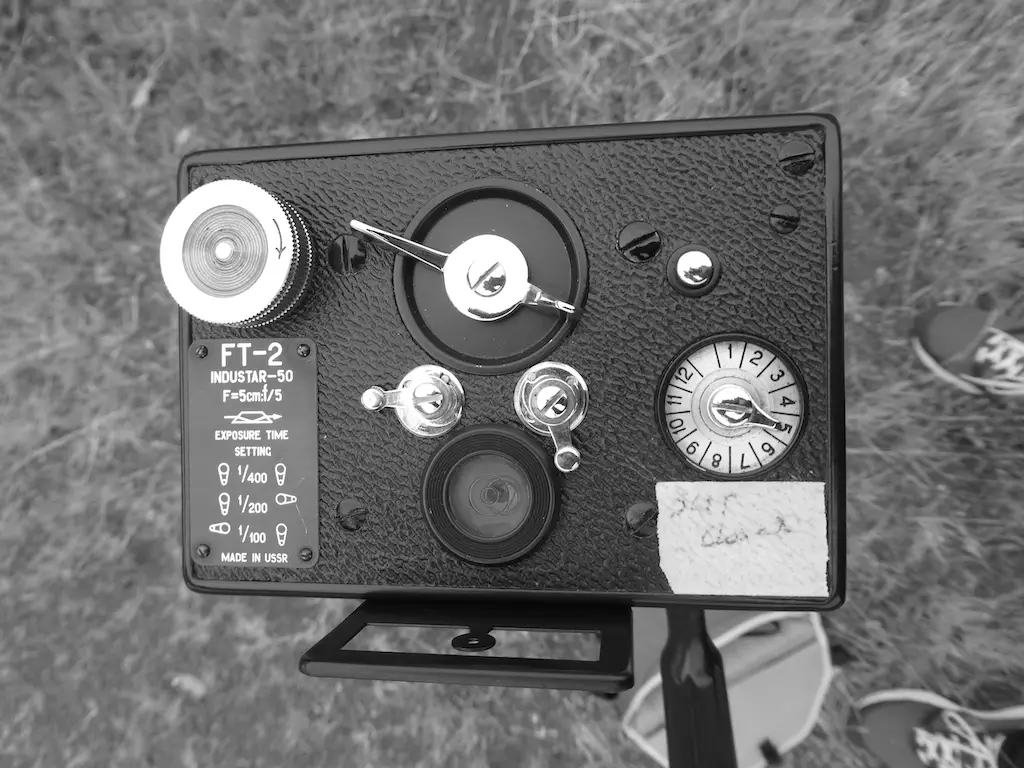
The FT-2 takes standard 35mm film. However, it must be re-spooled onto a proprietary film cartridge prior to loading the camera. Of course this must be done entirely in the dark if you are using panchromatic film. Composing the image is imprecise at best. The image area is estimated by looking through a metal rectangle that swings up from the back of the camera. A spirit -level located on the top of the camera aids in keeping the horizon line flat. The FT-2 comes equipped with an Industar-50 lens with a fixed focus and aperture. Your only means of controlling exposure is by selecting one of three shutter speeds (1/400, 1/200, or 1/100). The shutter “speed” is achieved by applying brakes to the swinging mechanism, slowing the speed of the swinging lens to achieve a longer exposure. As implied by the term “swing lens”, these cameras produce a long panoramic image by exposing a long segment of film as the lens itself swings in an arc. The image produced by the FT-2 is 24mm x 110mm, approximately three times wider than a standard full frame 35mm negative. This large image area, combined with the 50mm lens allows the camera to capture a remarkable 120 degree view. Interestingly, this field of view roughly approximates that of human eyesight resulting in an image both familiar and immersive.
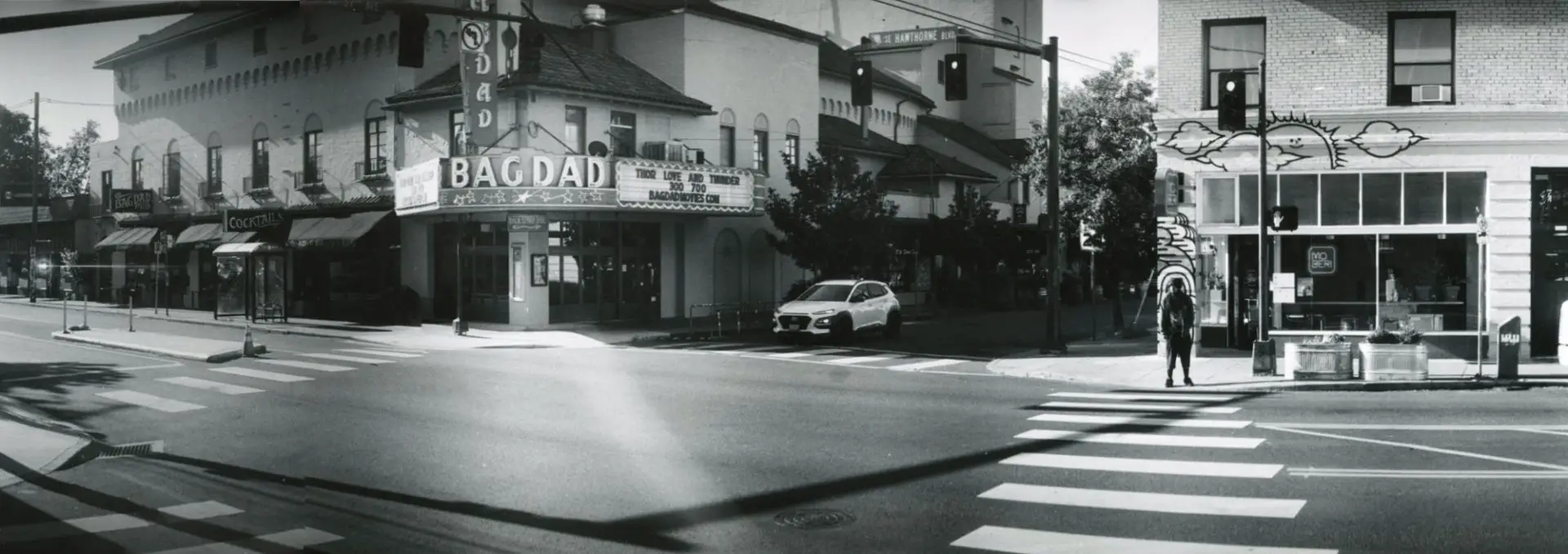
These five frames were taken around downtown, Portland, Oregon. Portland’s unique geography is roughly defined by two rivers, the Willamette and Columbia. The Willamette River cuts through the middle of the city dividing into its east and west sides, while the Columbia River runs along the city’s northern edge and forms much of Oregon’s border with Washington State. These two rivers, and the bridges that cross them, are central to the aesthetic of the city and define its character. They have also given it two of its many nicknames: River City and Bridge City. A large portion of Portland’s river frontage is publicly accessible via downtown’s Waterfront Park and the Vera Katz East Bank Esplanade. I found the panoramic view captured by the FT-2 was particularly well suited for photographing the river front and bridges of Portland’s central core.
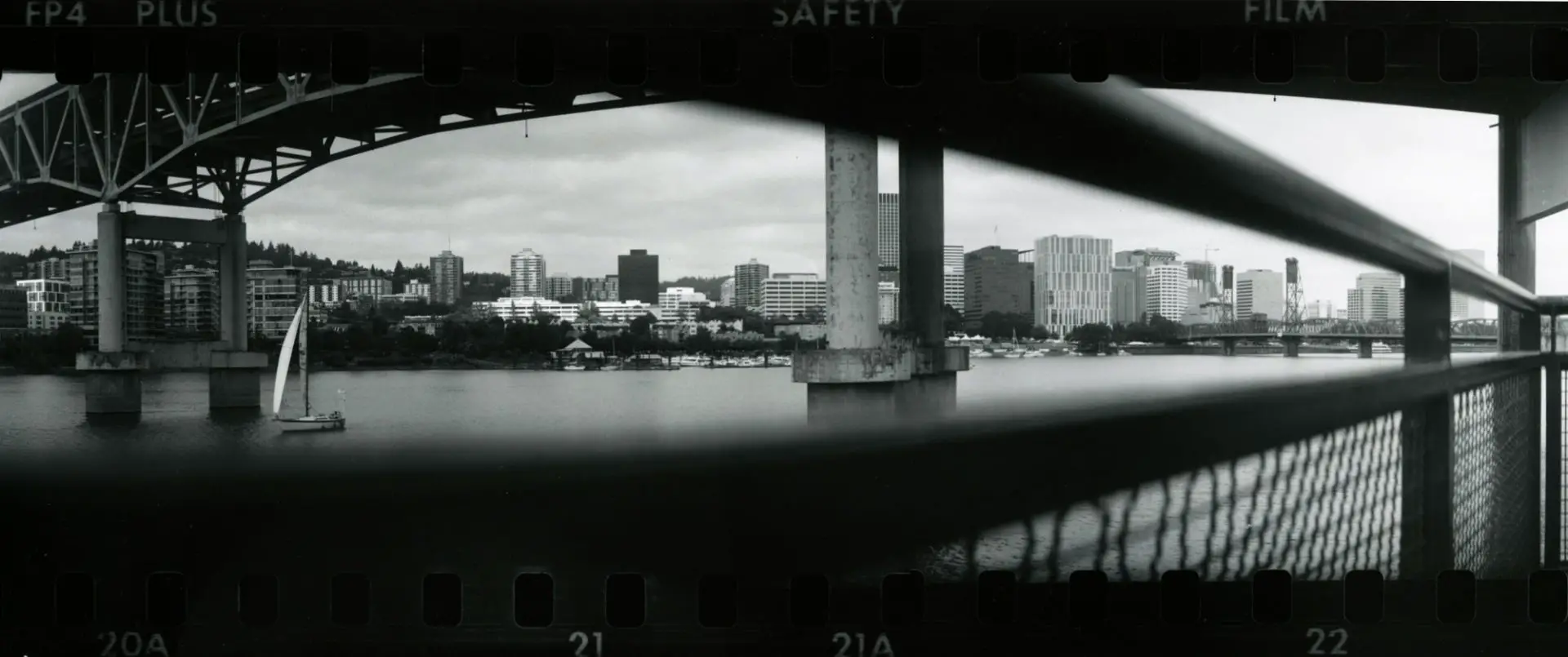
The FT-2 is a really enjoyable camera to use. The limitations of the viewfinder forced me into a state of compositional detachment, which I found to be creatively liberating. While you can more or less control what will be in the center of the image, it is sort of a guess as to what the actual borders of the image will be. One thing you can rely on, though, is that you will probably capture more than you thought, not less! Shooting with this camera also seems to provide an element of stealth. Neither the camera itself, nor the act of using it, aligns with most people’s ideas about what photography looks like, therefore, you can go about your business of taking a photograph and the people around you don’t seem to realize or care that they may be in the photo.
One final note on processing these images. Utilizing the large 24mm x 110mm negative comes with some unique challenges. I can imagine this size negative could create a challenge for commercial labs that are optimized for standard, full frame negatives. I am fortunate to have a darkroom in my basement, so I’m able to make traditional darkroom prints from the negatives using a glass 4×5 negative carrier. It is also possible to scan the negatives on a flatbed scanner, and with a digital camera and a pixl-latr.
I hope you enjoy these five frames as much as I enjoyed shooting them.

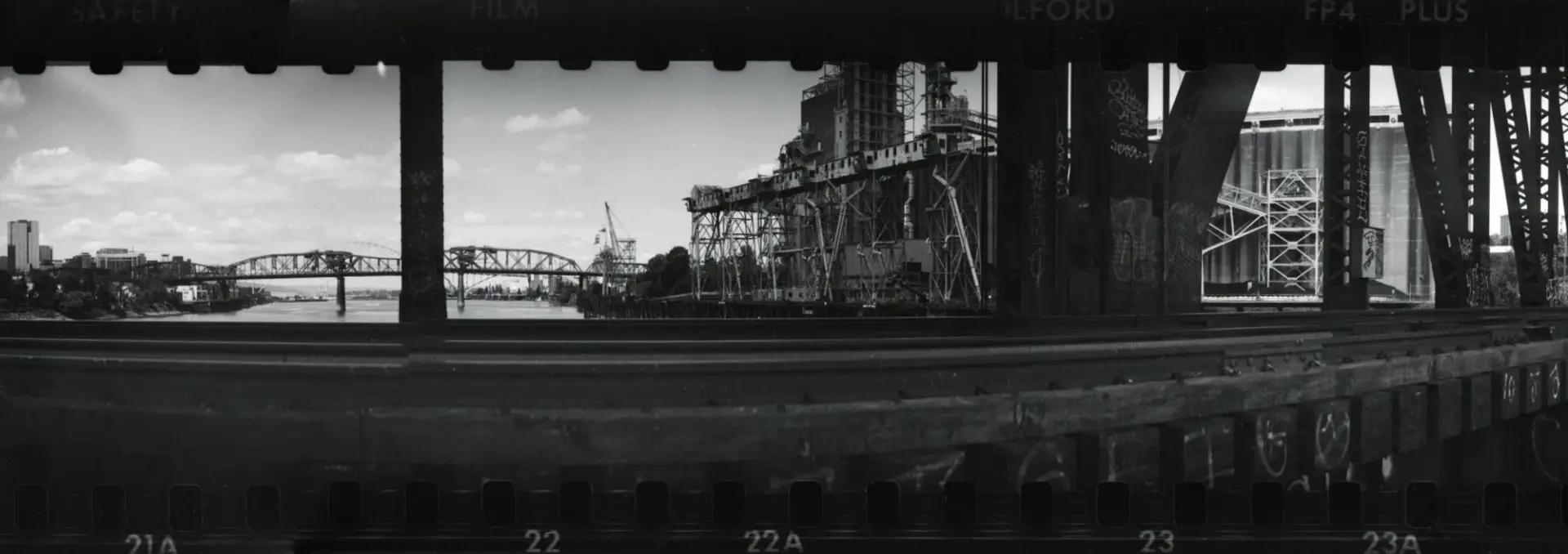
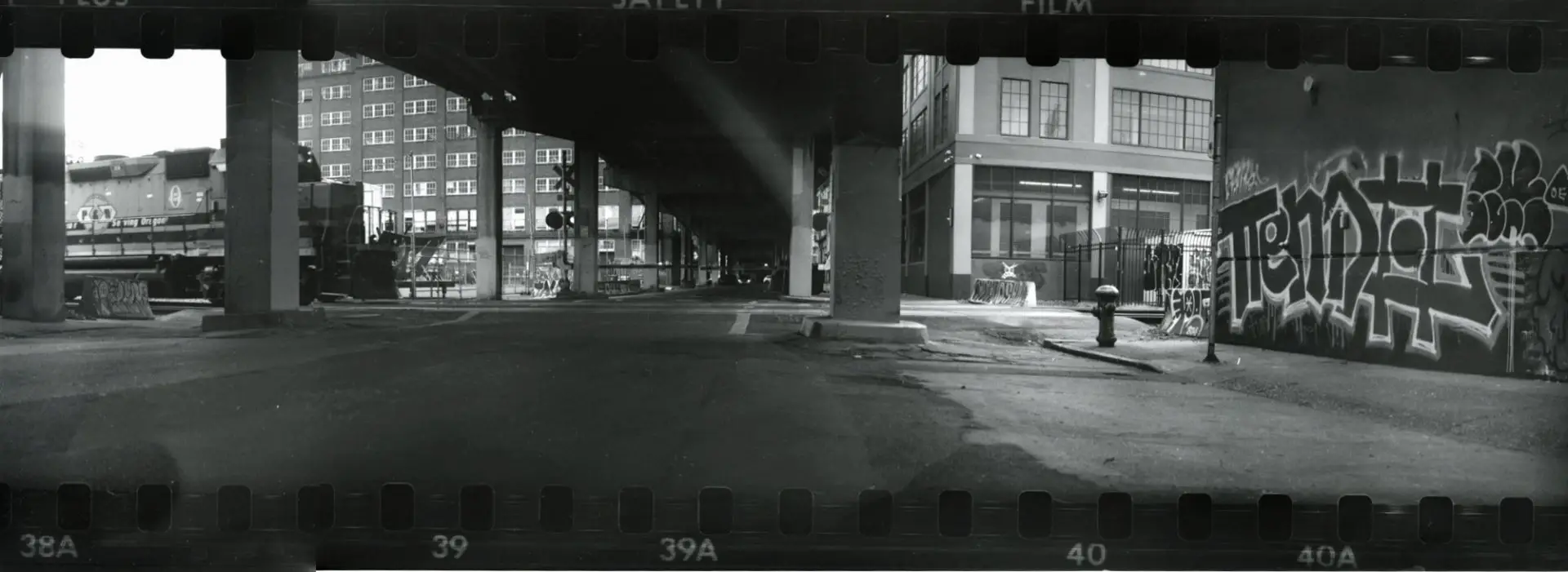
If you are interested, I would invite you to follow me on Instagram.
Olaf Matthes has written an excellent guide to the FT-2 camera. It has helped me immensely and goes into greater detail than me on the history, operation, and repair of this camera and I’m pretty sure Mr. Matthes helped me track down the cause of a pesky light leak I was having with this camera, for which I am extremely grateful.
Another excellent review of the KMZ FT-2, by Žiga Četrtič can be found on Kosma Foto.
Share this post:
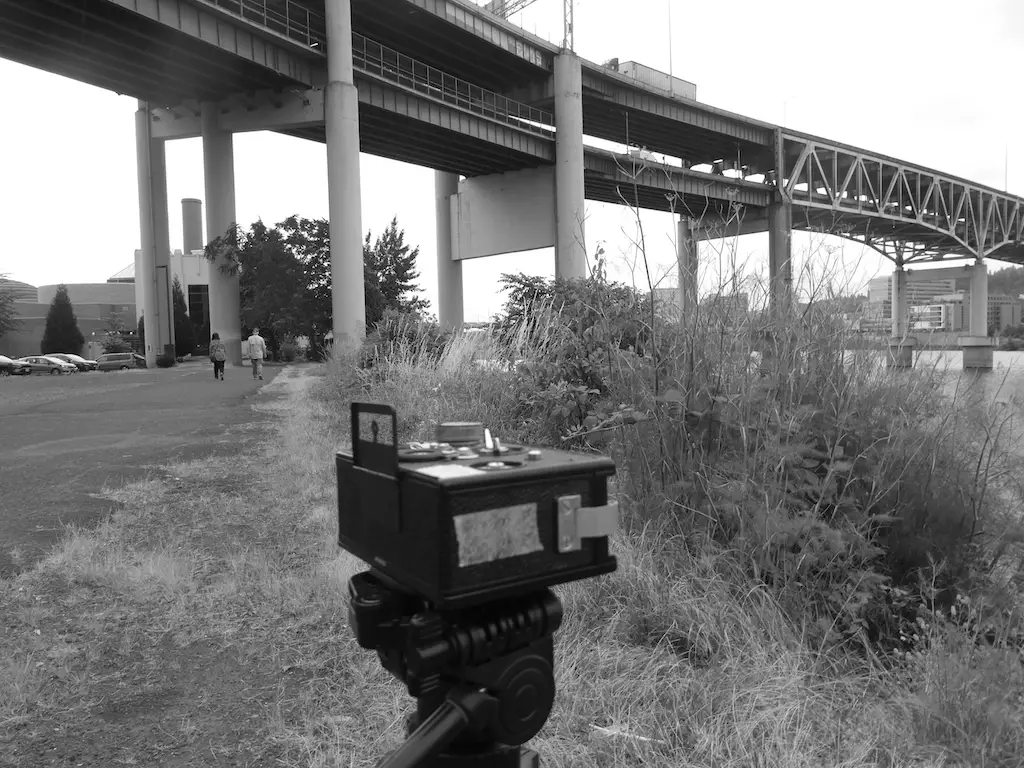
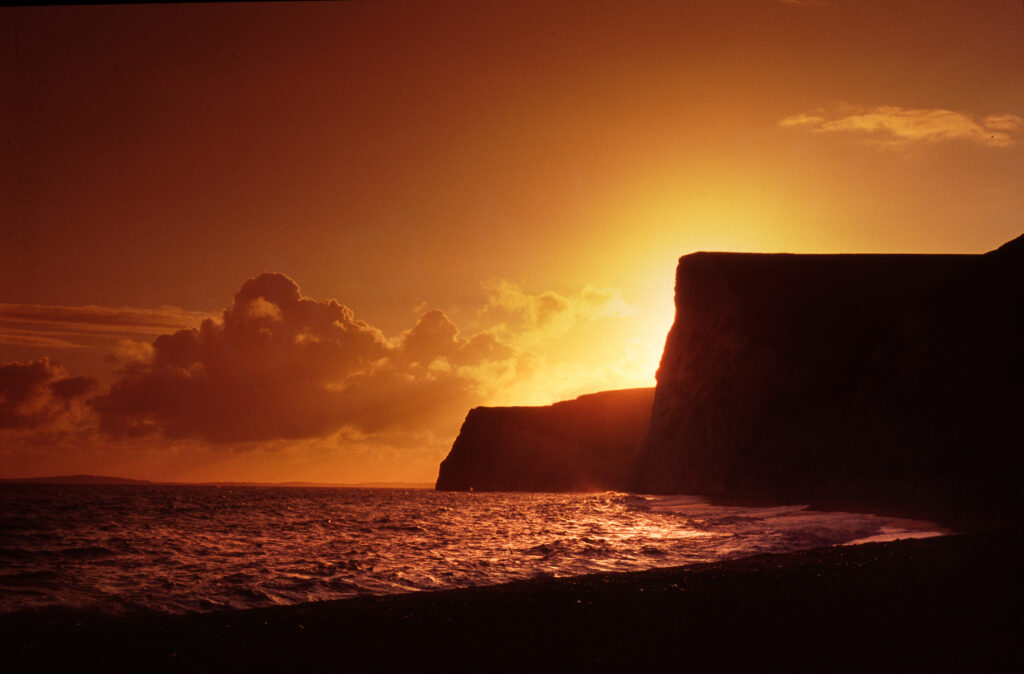
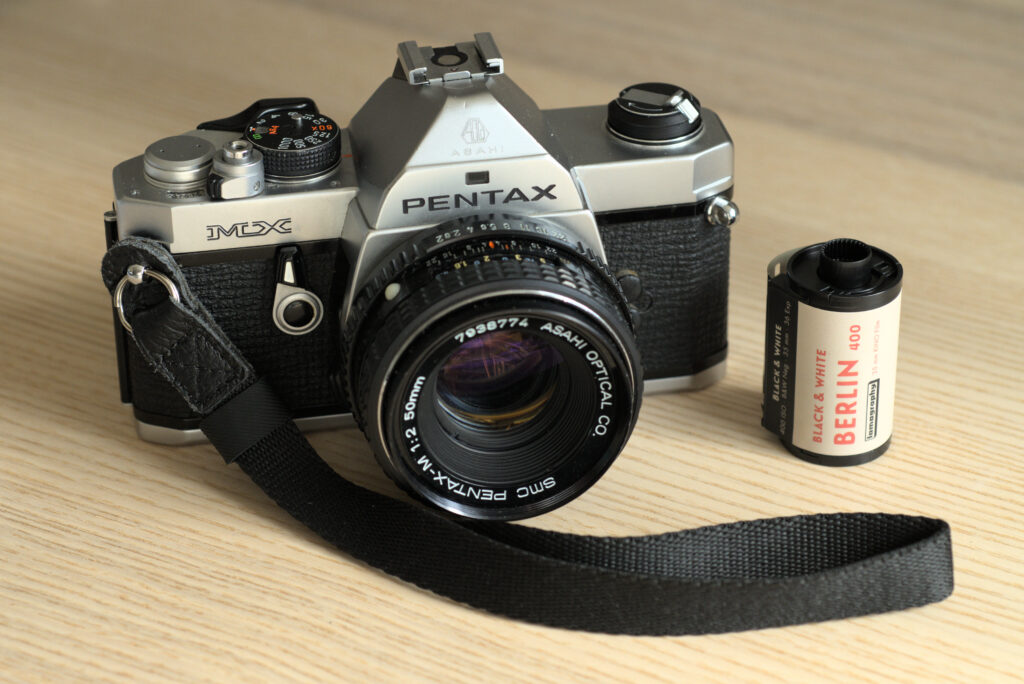
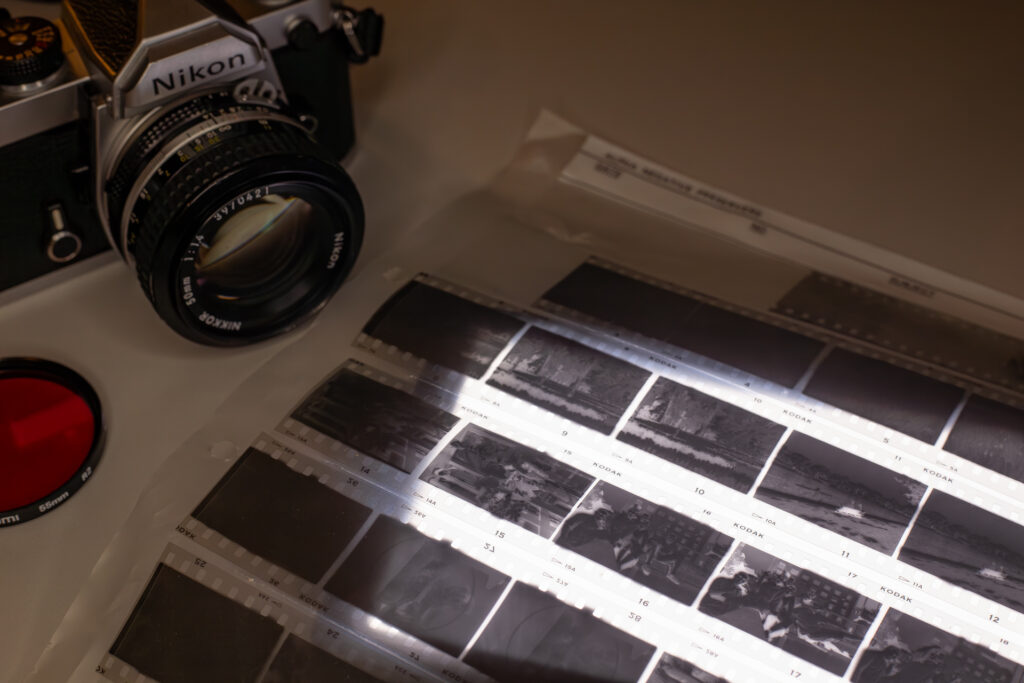
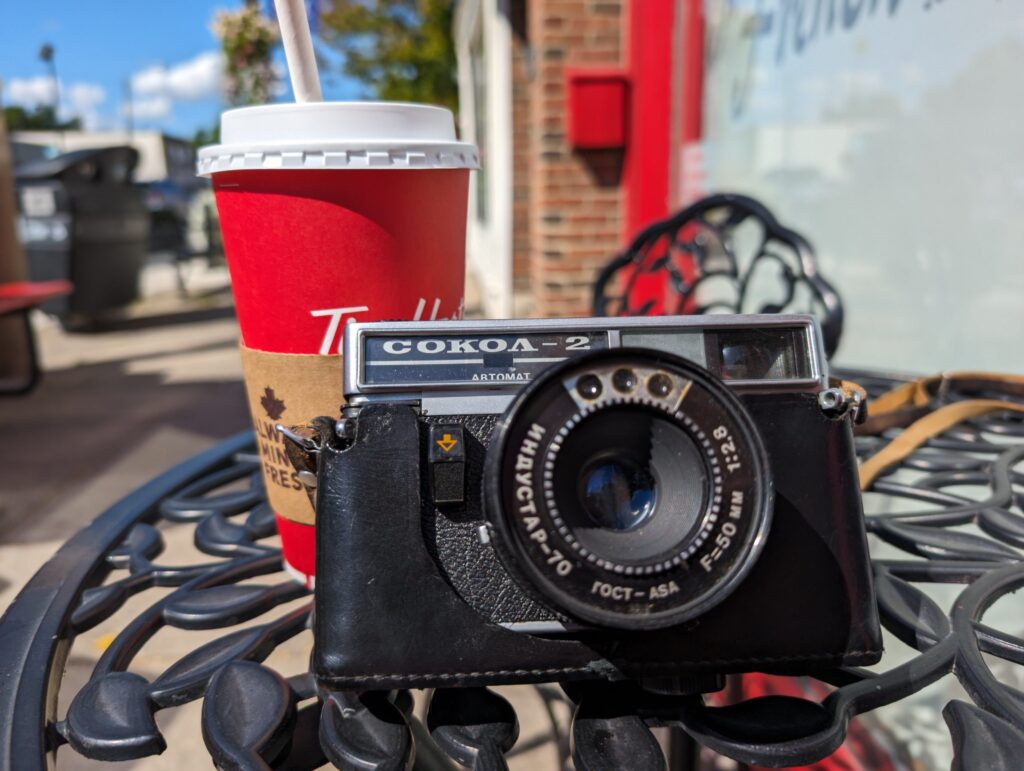




Comments
SF on 5 Frames with an FT-2 Soviet Swing Lens Camera – By Daniel Smith
Comment posted: 09/09/2022
There is also a magic 1/60th (ish) setting which is not noted on the dials. (both horizontal - the only other permutation of dial)
Comment posted: 09/09/2022
Bob Janes on 5 Frames with an FT-2 Soviet Swing Lens Camera – By Daniel Smith
Comment posted: 09/09/2022
Comment posted: 09/09/2022
Comment posted: 09/09/2022
Comment posted: 09/09/2022
Comment posted: 09/09/2022
Comment posted: 09/09/2022
Shawn Granton on 5 Frames with an FT-2 Soviet Swing Lens Camera – By Daniel Smith
Comment posted: 10/09/2022
Have you tried this camera on any of Portland's higher vantage points? It would be cool to see the results from Rocky Butte or Pittock Mansion.
Comment posted: 10/09/2022
Robert Riffel on 5 Frames with an FT-2 Soviet Swing Lens Camera – By Daniel Smith
Comment posted: 10/09/2022
Comment posted: 10/09/2022
Comment posted: 10/09/2022
Chris on 5 Frames with an FT-2 Soviet Swing Lens Camera – By Daniel Smith
Comment posted: 10/09/2022
Comment posted: 10/09/2022